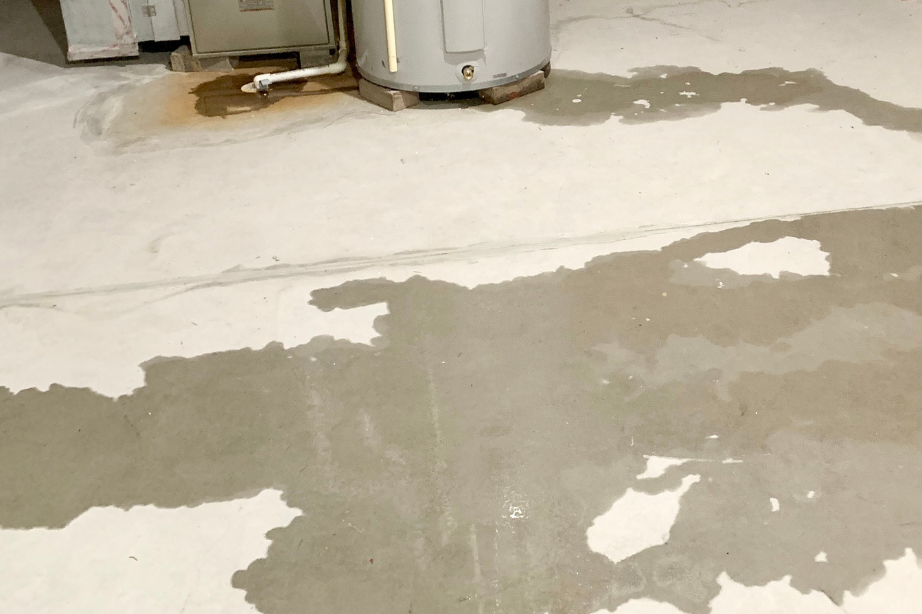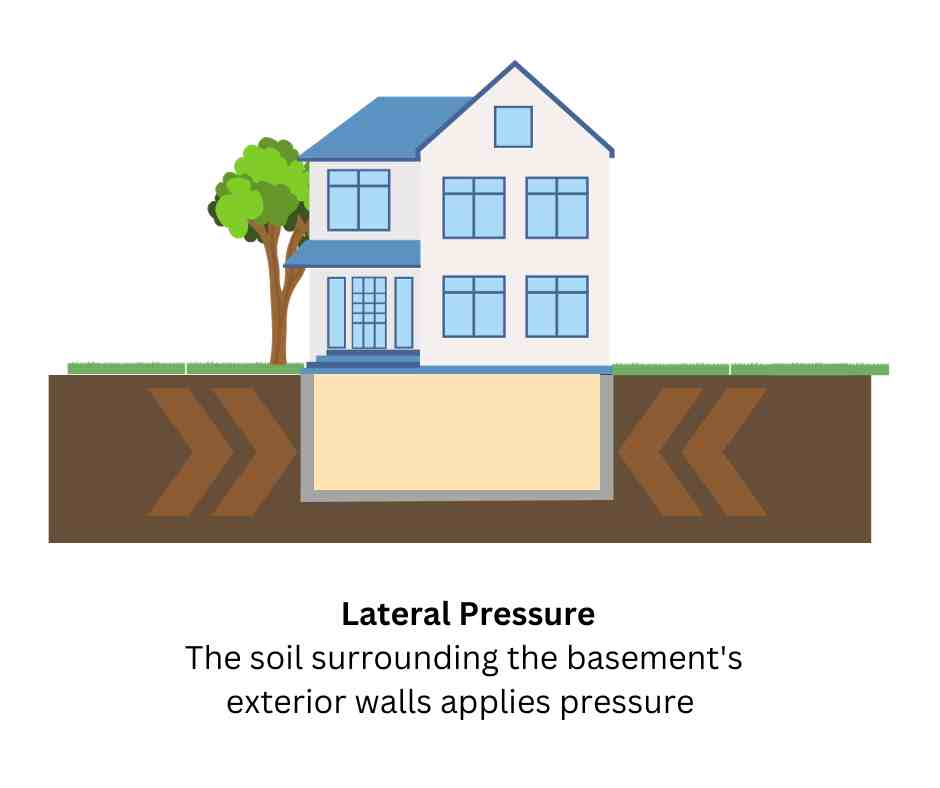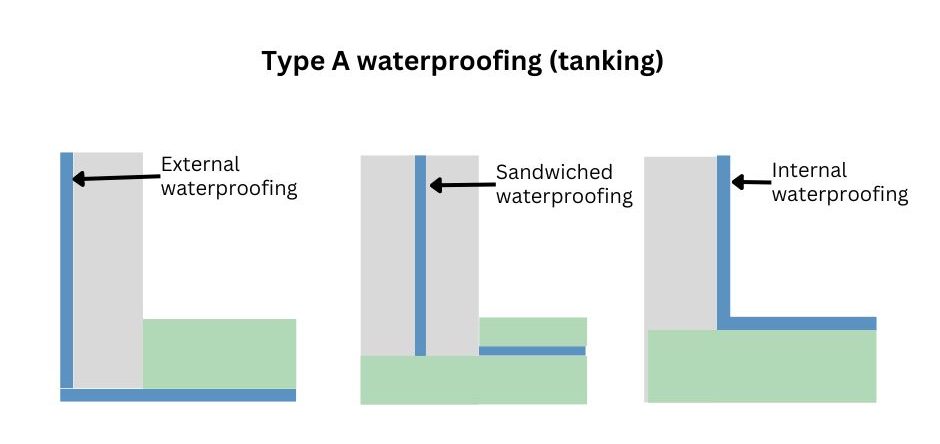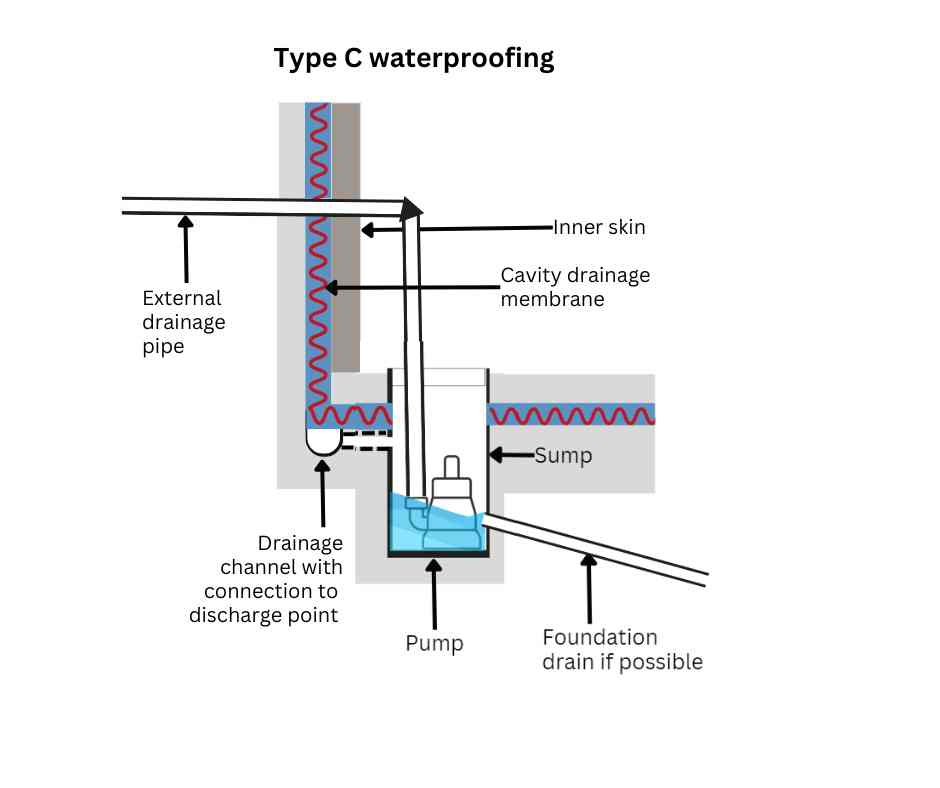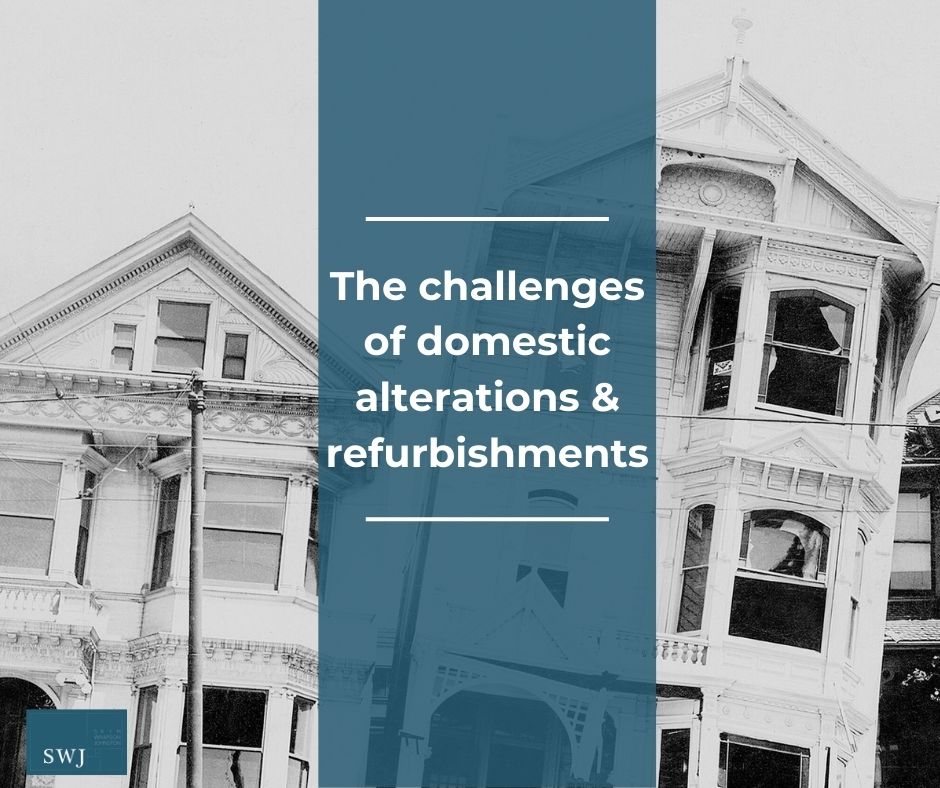In this article we look at the different reasons why your basement may have a leak and what has caused it. You don’t need to experience flooding in your basement to have a leak, damp patches and cracks in the walls can also indicate there is an issue with your basement and the structure or waterproofing has been compromised.
If you have concerns about your basement, then the best thing to do is consult a structural engineer. We go into the reasons why your basement might leak in this article to help you understand what you might be dealing with. You might also find our blog ‘What to do if your basement floods’ informative if this is an issue you are dealing with at the moment.
1. Lateral Pressure
Lateral pressure is where the soil that surrounds your basement is pushing against the exterior walls. If your retaining walls are not strong enough over time with lateral force can cause a crack and breech in the basement walls.
The naturally occurring water in the soil can then make its way into your basement which may cause the crack to increase in size further damaging the walls – so, it is really important that if you see a crack, you contact a structural engineer. It is hard to predict whether your basement is surrounded by soil that will be prone to lateral pressure, but we always recommend that if you are considering a basement, you have a ground investigation to determine the type of soil you are dealing with and then a structural engineer can advise on the best course of action. Read more in Can I add a basement to my home?
If you see a crack appear in the walls of your basement please contact a structural engineer immediately. If you’re local to Oxford then call us on 01993 225 085 or email mail@swjconsulting.co.uk and we can come and take a look for you and hopefully find a way to prevent further damage.
2. Hydrostatic Pressure
Hydrostatic pressure can be caused by an increased water level in the soil surrounding the basement and this moisture soaks directly into the walls, especially if the soil is already saturated. Hydrostatic pressure can be very destructive. The more water there is in the wall the damper the walls will be, the more mould will grow. As the damp expands it will weaken the walls themselves, causing the original leak to erode and expand further.
Any amount of moisture absorbed by your walls is a cause for concern and even a tiny leak can mean that over time water will pool in your basement. Sometimes, in dry or warmer periods, these leaks may appear to go away – but this is only because there is less moisture to transfer into your walls. So, it is important to get a structural engineer to investigate any crack in your basement wall, or concerns you may have, so any further damage can be prevented.
3. Condensation
Although you may associate condensation with glass and windows it can be the cause of water building up in your basement, it can also be the reason that cracks form allowing more water in. Condensation occurs when rooms don’t have adequate ventilation and moisture in the air can’t escape so it transfers onto surfaces like walls and ceilings. Wet or moist walls leads to mould growing which has health issues for those living with it and it can also damage the wall which could lead to it crumbling and therefore letting in more moisture from the surrounding soil.
You can easily avoid the issues of condensation by ensuring you have adequate ventilation in your basement particularly if you spend a lot of time in there or have an appliance like a tumble drier that you run regularly stored there.
4. Waterproofing or mechanical failure
The failure of an existing water proofing system is a common cause for basement leaks. There are three types of waterproofing system Type A, B and C – we will explain what these are later. You are less likely to get leaks with a Type A waterproofing system. This is a system, also known as tanking, that provides a continuous barrier to the structure of your basement either internally, externally or sandwiched (see diagram below). Your basement will be completely waterproofed and lateral or hydrostatic pressure will no longer be able to push water through the walls. However, if the waterproofing is damaged then your protection will be compromised.
Where there is a high-water table any defects in the waterproofing barrier (whether internal, external or sandwiched) will allow water ingress if the structural elements are permeable, like with a basement built from masonry bricks. The problem is then gaining access to the defect to fix it. A problem with external waterproofing will need significant excavation to access and finding the defect will be an issue if the waterproofing layer was not continuously bonded. A problem with internal waterproofing maybe easier to find and access but there will be disruption to the internal fittings to access the issue.
You are more likely to experience a ‘flood’ or water in your basement with a Type C waterproofing system where a pump is used and has failed or is faulty. Problems can happen with a failure of the pump. If a pumps float switch breaks, then it will not empty itself and could easily overflow, allowing water to pool and spread through your basement.
Type C waterproofing comprises of two elements; a cavity drainage membrane and a drainage system, so any water is channelled, collected and discharged. The system uses the cavity to drain water to a sump where it’s pumped out or can flow away from the structure if passive drainage is possible either externally or into the foundations.
5. Natural events beyond your control
Finally, and as mentioned in our article ‘what to do when your basement floods, it maybe that a local river bursts its banks, and the water table rises so rapidly that there is nothing you can do to prevent your home from flooding whether you have a basement or not. Flood water will be dirty, smelly and contain hazardous material and you should try to stay out of it. Turn off all electrics and seek advice on the best way to drain the water, dry out your home and clean it effectively. You will need to contact a structural engineer to be sure the flood waters have not caused damage to the structure of your basement.
What to do about leaks
Whatever the reason your basement is letting in water, you need to consult a professional to fix the issue at the earliest stage before the crack/ingress and damage gets worse.
Structural engineers, like ourselves, will be able to help establish if the cause is structural (lateral or hydrostatic pressure) or if there has been any structural damage as a result of the leak. We should be your first port-of-call before a waterproofing expert as we will also need to establish whether the structure itself is safe.
We can complete a site assessment to understand if you are more at risk from lateral or hydrostatic pressure and make any recommendations that might ease these pressures in the future. We will also be able to assess how we might access existing breaches to have them fixed, if that is possible.
SWJ Consulting has extensive experience with basements and working with waterproofing experts to find the right solutions for clients. The good news is that Type C waterproofing can be applied whether you also have an existing Type A or Type B systems to give you additional protection. As long as your Type C cavity drainage system is then well maintained, and your sump pump receives regular maintenance your basement will be protected against water ingress. Any water that makes its way through the waterproofing layers or via cracks in your walls will be diverted away, leaving you with a safe and dry basement.
If you have concerns about an existing basement or want to investigate building a new basement under a new build home or existing building please give us a call on 01993 225 085 or email mail@swjconsulting.co.uk. It is never too early to speak to us about basements as we may be able to save you from these flooding and ingress issues with the right investigations and waterproofing solutions.

